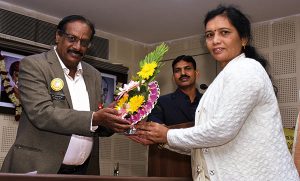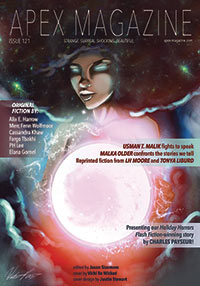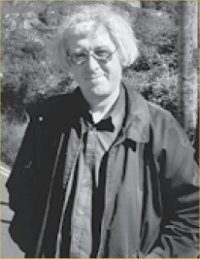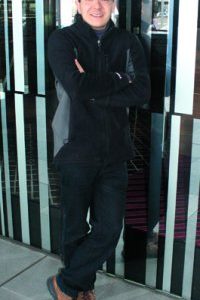SF in India by Mysore Srinarahari

The 18th Science Fiction Conference was held January 10-11, 2020 at Aurangabad, Maharashtra state, India, organized by the Indian Association for Science Fiction Studies®, Bangalore (IASFS), Indian Science Fiction Writers Association, Ayodhya (ISFWA), Marathi Vidnyan Parishad, Mumbai (MVP), Marathwada Shikshan Prasarak Mandal, Aurangabad (MSP), and Deogiri Institute of Engineering and Management (DIEM), with the host Mukthananda College, Gangapur, Aurangabad District. Highlights of the event included the celebration of Isaac Asimov’s birthday centenary; a video speech by SF writer Michael Brotherton of the University of Wyoming; paper readings by 130 scholars and researchers; story reading sessions; keynote address and plenary sessions by eminent personalities in the field; and a magic show entitled “SF and Mentalism”.
Drs. Madhusudan N Sarnaik and Balaji A Navale were the conveners of the conference and welcomed the gathering. Dr. Srinarahari, the secretary-general of IASFS, gave a PowerPoint presentation that displayed how SF has grown after the second wave of Indian SF from the ’60s to the 21st century. Also, he pointed out how India has been able to appear on the map of SFproducing countries. He briefed the audience about the conference theme: “Science and Science Fiction: Interdisciplinary and Multidisciplinary Perspective.” Further, he highlighted how the genre has influenced other branches of knowledge and vice versa.

Dr. Pramod Yeole, the honorable Vice-Chancellor of Dr. Babasaheb Ambedkar Marathwada University, Aurangabad, inaugurated the Conference by lighting the lamp. The VC pointed out the positive impact of science and technology in the life of the common person, discussing how mobile phones enable communication, booking cabs, ordering food, and doing banking transactions. Being a Professor of pharmaceutical sciences for 32 years, he cited a number of instances to explain how the theme was relevant in the current context to create solutions for many complex issues. He called for the translation of global works to the vernacular and to regional languages to enable the local people to know the current trends in SF.
Dr. Arvind Mishra, the secretary of ISFWA, spoke about the association and its activities, explaining how the association could provide a platform for Hindi writers to publish their works regularly in Vignyan Katha magazine.
Mohanrao Savant, a member of the executive council, and the Deshmukh College Development Committee of MSP joined the dignitaries while releasing the peer-reviewed online and print version of International Science Journal during the inaugural session.
While giving the keynote address, AP Deshponde, the honorary Secretary of MVP, traced the development of the genre from the times of the Vedas, the Ramayana, and the Mahabharata. He discussed the contributions of the British and the boom in the growth of the genre on the American continent. He also talked about how the MVP conducted story-writing competitions during the ’70s, and how writers in Marathi could align themselves with the emerging trends of popularizing science and science fiction along with the stalwarts like Jayanth Narlikar, Bal Phondke, and others. Deshponde added that MVP has been conducting a number of story writing workshops up to the current day. He gave an account of the growth of the genre in other vernacular languages like Hindi, Bengali, Kannada, Malayalam, and Tamil. He stressed that the publication of It Happened Tomorrow (1993), edited by Bal Phondke, is a proof that authors from different locations in India could align with one voice and one India. The selection of Laxman Londhe’s “Einstein the Second” as the best Indian SF story from the sub-continent by Dr. Srinarahari for publication in The Road to Science Fiction, edited by James E. Gunn, brought a global flavor to Indian SF works. The impact could be seen in the present day, with 120 Marathi SF writers publishing SF stories in 400 magazines during Deepavali (the festival of lights in October-November) every year.

Michael Brotherton, SF writer and editor and professor of astronomy at the University of Wyoming, gave a video talk on the “Synergies of Science and Science Fiction”. He remarked that science and SF are complementary to each other. Quoting Carl Sagan, he said that science is a way of thinking rather than a body of knowledge. Then he quoted Albert Einstein, who said that imagination is more important than knowledge. Quoting Bernard Baruch, he said that the spirit of inquiry is essential, as in the case of Newton, who questioned why the apple falls. Citing the idea of flying cars, he demonstrated how telescopes, spacecraft, and the time machine are interconnected. He drew the conclusion that science requires speculation as much as skepticism, and that SF can educate, inspire, and entertain. Hence, SF is the crucial imagination of science.
During one of the plenary sessions, Dr. Ashok Thorat, director of the center for digital humanities in Pune, India, explained the concept and scope of the center, and highlighted how the subject can encompass the whole of humanities, science, and other branches of knowledge. He said SF and digital humanism go hand-in-hand in their methodology.
Arvind Mishra’s speech on Indian SF highlighted how social media has provided a platform to unite every writer in the genre, allowing them to interact over a particular topic in recent days. He also spoke about Asimov and Arthur C. Clarke.
Dr. YH Deshponde discussed how SF has its roots in Indian mythology from the days of Veda Vyas, the pioneering writer of the Mahabharata. Harish Yadav presented a paper on “Magic and Mentalism in Science Fiction”, and talked about the definitions of SF, mentalism, and magic in print and filmed SF.
Dr. Srinarahari spoke about Isaac Asimov in celebration of his birth centenary, including anecdotes about Asimov’s long hours in candy stores; his father’s surprise over his production of a few books; his acknowledgement of gratitude to his father for inspiring his writing as he “valued learning”; how excited his family was when they got a telephone at home and an extension to the kitchen; returning to full-time authorship like Jules Verne; describing the experience of space travel for an acrophobic; considering reading newspapers as a change in the hospital when he had heart surgery; and creative writing and personal habits and aspirations. The speaker described Asimov writing his own biographies, the authenticity of his subject matter, appealing language, narration techniques, lucidity, and other elements.

Srinarahari categorized Asimov’s 400 works and focused on his SF, talking about the Foundation series and Robot novels and their culmination in the novel Robots and Empire (1995). As an Asimovian scholar, Srinarahari dealt with his structure, plot, characterization, point of view, themes, and other factors. He highlighted that Asimov is alive here with us because of his extraordinary ability to sketch characters like Susan Calvin, Kelden Amadiro, Gladia Solaria, Hari Seldon, Elijah Baley, Robot Giskard, R. Daneel Olivaw, and others.
In addition to the speaker’s address dealing with the impact of Asimovian works on Indian SF and the “Indian Response to American Science Fiction”, he enlisted Indian scholars who have done research on Asimovian works for their doctoral degrees. The theses and dissertation works which have focused on Asimov’s works are Prakash S. Rao’s “Isaac Asimov’s Works of ’60s and ’70s: A Study in Scientific Humanism”; Veena’s “Paradoxes of Order in the Fiction of Isaac Asimov”; S. Guruswamy’s “Asimov’s Vision of Utopia in Foundation’s Edge and Foundation and Earth“; “Fiat Homo – Let There Be Man – Apocalyptic Renewal in Asimov’s Foundation Series” by K.S. Purushothaman; Panneer Selvam’s “Credibility Criterion in Asimov’s Foundation Trilogy”; and “The Robotistic Works of Isaac Asimov: A Study” by Anand Arul Das, who has applied the theory of posthumanism to the works of Isaac Asimov.
Concluding his talk, Srinarahari explained that the Indian Association for Science Fiction Studies in Bangalore, India was established in 1998 on January 2, Asimov’s birthday. Now the institution is celebrating its 22nd year. Asimovian topics were chosen by many scholars in presenting their papers during the last 18 SF conferences held in India. Thus, the conference acknowledges a debt to the great giant of SF.
Dr. Yeshwant Deshponde is often referred to as “the Indian Asimov.” Coincidentally, his birthday was on the second day of the conference, and celebrated with all pomp, with Deshponde honored by the organizers and participants.
In addition to the presentation of 130 papers by the participants, there was a magic show entitled “SF & Mentalism” by Harish Yadav. There was a festive mood and a sense of achievement, contentment, and gratification among the delegates, participants, and the host. The 19th Science Fiction Conference in India will be held October 5-7, 2020 in Bangalore, Karnataka, and will be organized by Bangalore University in collaboration with IASFS, ISFWA, and others.
–Photos and report by Mysore Srinarahari
This report and more like it in the March 2020 issue of Locus.
 While you are here, please take a moment to support Locus with a one-time or recurring donation. We rely on reader donations to keep the magazine and site going, and would like to keep the site paywall free, but WE NEED YOUR FINANCIAL SUPPORT to continue quality coverage of the science fiction and fantasy field.
While you are here, please take a moment to support Locus with a one-time or recurring donation. We rely on reader donations to keep the magazine and site going, and would like to keep the site paywall free, but WE NEED YOUR FINANCIAL SUPPORT to continue quality coverage of the science fiction and fantasy field.






